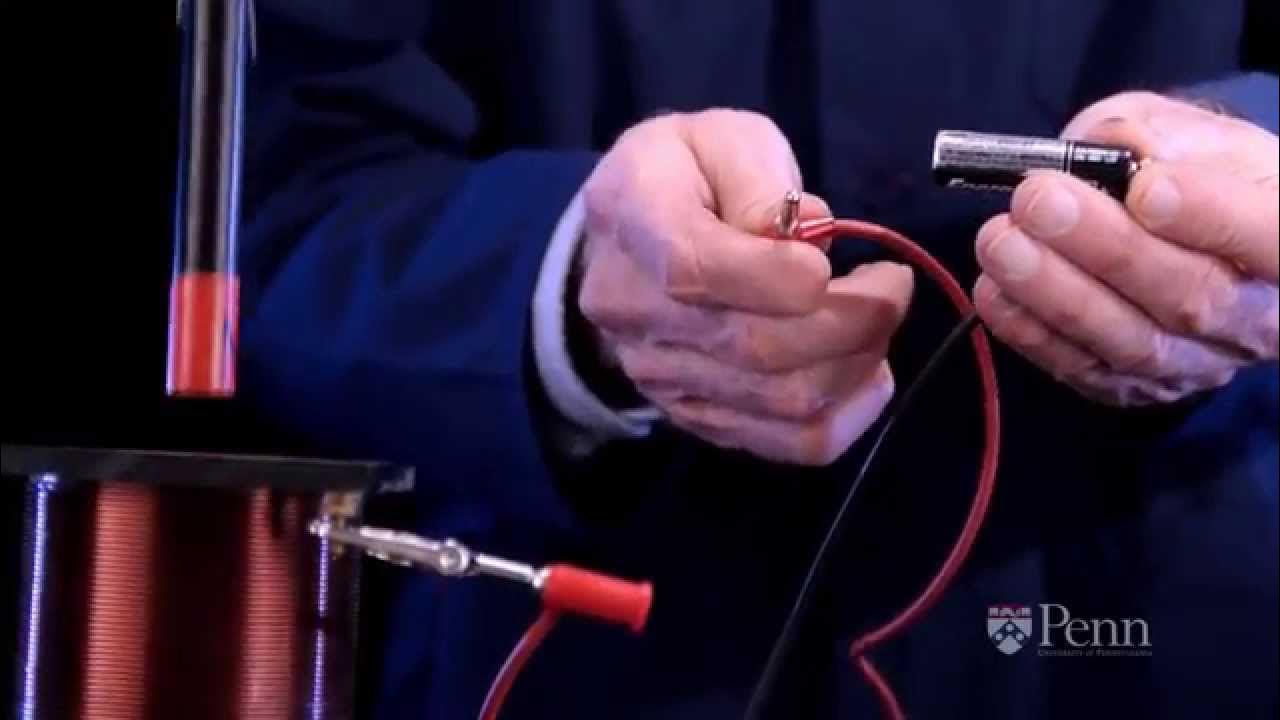PENERAPAN HUKUM FARADAY PADA PEMBANGKIT LISTRIK SEDERHANA || RBL FISIKA DASAR 2A—KELOMPOK 5 TPB 18
Summary
TLDRThis video explains the application of Faraday's law in generating electricity using a simple generator setup with a dynamo and old cassette tapes. The presenters, students from the Actuarial Science program, demonstrate how changes in a magnetic field can induce an electric current. The project involves creating a generator with varying wire coils (30 and 60 loops) and using recycled materials like old cassette tapes. The experiment shows how the number of wire loops affects light intensity. The project highlights the potential of renewable energy, though with limitations like low efficiency and dependence on mechanical movement.
Takeaways
- 😀 Faraday's Law of Induction explains how changes in magnetic fields can generate electricity through the movement of a conductor.
- 😀 The project demonstrates the application of Faraday's Law in generating electricity using a homemade generator made from a dynamo and recycled cassette tapes.
- 😀 Faraday’s Law has two key principles: one that relates the mass of a substance produced by electrolysis to the electrical charge, and another that links it to the equivalent mass of the substance.
- 😀 A generator is a machine that converts mechanical energy into electrical energy, and it operates based on Faraday's Law.
- 😀 The formula for Faraday's Law of Induction is E = -n * ΔΦ / Δt, where E is the induced electromotive force (EMF), n is the number of coil turns, ΔΦ is the change in magnetic flux, and Δt is the change in time.
- 😀 Materials used for the generator include cardboard, glue, scissors, wires, old cassette tapes, magnets, and a light bulb, among others.
- 😀 The generator was assembled by winding wire around cardboard forms, attaching magnets inside a tube, and connecting the components to a dynamo.
- 😀 Two sets of coils were tested: one with 30 turns and the other with 60 turns. The generator with 60 turns produced a brighter and more stable light.
- 😀 The project has several strengths, including being simple, affordable, and using recycled materials, making it environmentally friendly and portable.
- 😀 However, the generator's efficiency is low, and it produces a small amount of power, limiting its practical use, especially in areas with minimal mechanical motion.
Q & A
What is Faraday's Law of Induction?
-Faraday's Law of Induction, proposed by Michael Faraday in 1831, explains how a change in a magnetic field can induce an electric field. It is the foundation of electromagnetic induction, which generates an electromotive force (EMF).
What does Faraday's First Law state?
-Faraday's First Law states that the mass of a substance produced during electrolysis is directly proportional to the amount of electric charge passed through the substance.
How does a generator work based on Faraday's Law?
-A generator works by converting mechanical energy into electrical energy. According to Faraday's Law, when a conductor moves through a magnetic field, it cuts through magnetic lines of flux, inducing an electric current (EMF).
What is the formula for Faraday's Law of Induction?
-The formula for Faraday's Law is E = -n * (ΔΦ / Δt), where E is the induced EMF in volts, n is the number of coils, ΔΦ is the change in magnetic flux in Weber, and Δt is the time interval in seconds.
What materials and tools are needed for this Faraday generator experiment?
-The materials and tools required for the experiment include cardboard, hot glue, scissors, wire, a used cassette tape, magnets, a small light bulb, soldering iron, and wood for assembling the generator.
What happens when the generator uses 30 turns of wire compared to 60 turns?
-When using 30 turns of wire, the light bulb produces a dim and unstable light. However, when 60 turns of wire are used, the light produced is brighter and more stable, demonstrating a stronger induced current.
What are the advantages of using a Faraday generator with a cassette tape?
-The advantages include simplicity, low cost, recyclability (by using old cassette tapes), portability, and the use of renewable energy sources since the generator is powered by mechanical motion, which is a form of kinetic energy.
What are the disadvantages of this Faraday generator?
-The main disadvantages include low efficiency, limited power output (as it produces a small amount of electricity), and dependence on mechanical motion to generate electricity, which may not be feasible in areas with little movement.
Why is this generator considered to use renewable energy?
-This generator is considered to use renewable energy because it converts mechanical (kinetic) energy into electrical energy without relying on non-renewable resources like fossil fuels.
What improvements are hoped for in future versions of this Faraday generator?
-The goal for future versions is to enhance the efficiency, increase power output, and refine the design for better performance, potentially incorporating innovations in the technology to make it more practical and effective.
Outlines

此内容仅限付费用户访问。 请升级后访问。
立即升级Mindmap

此内容仅限付费用户访问。 请升级后访问。
立即升级Keywords

此内容仅限付费用户访问。 请升级后访问。
立即升级Highlights

此内容仅限付费用户访问。 请升级后访问。
立即升级Transcripts

此内容仅限付费用户访问。 请升级后访问。
立即升级5.0 / 5 (0 votes)






